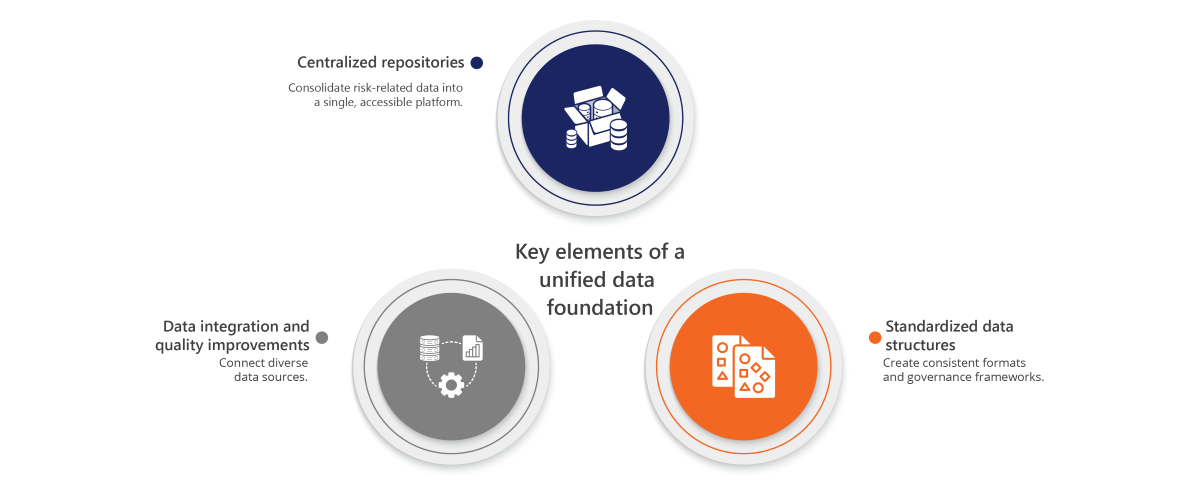This article is based on insights from our white paper Unified risk modeling for utility resilience. Click here to download the paper and learn more about the essential building blocks of unified utility risk modeling.
But building an effective unified risk model takes more than technology. It requires a deliberate focus on the core building blocks: the data that fuels it, the frameworks that define risk, and the advanced analytics that turn insight into action.
Article continues below.

Core components of unified risk modeling
Building a strong data foundation
A unified risk model relies on high-quality, well-integrated data to generate accurate and actionable insights. Strengthening data foundations requires leveraging both established and emerging data sources to create a comprehensive view of risk. This approach merges rich legacy information—such as inspection reports, asset management records, and historical maintenance logs—with modern data inputs like LiDAR, satellite imagery, and real-time sensor data. Integrating these diverse datasets enhances predictive capabilities and supports proactive decision
making.
Key elements of a unified data foundation include:
- Centralized repositories: Consolidating risk-related data into a single, accessible platform improves visibility across departments and regions.
- Data integration and quality improvements: Connecting diverse data sources ensures a holistic risk assessment.
- Standardized data structures: Creating consistent formats and governance frameworks eliminates discrepancies in risk analysis.
Article continues below.

Defining risk through structured scenarios
Effective risk modeling requires clear definitions and frameworks to assess the likelihood and consequences of different threats. Key components of a structured risk framework include:
- Likelihood assessments: Quantifying the probability of events such as wildfires, infrastructure failures, and extreme weather impacts
- Consequence modeling: Evaluating the potential impact on grid reliability, safety, regulatory compliance, and financial performance
- Scenario-based planning: Simulating different risk conditions to improve preparedness and response strategies
Leveraging advanced analytics for deeper insights
Machine learning, scenario modeling, and simulations enhance risk assessments by uncovering patterns that traditional methods might miss. Utilities can apply advanced analytics to:
- Predict asset failures: Machine learning models can analyze historical data, environmental conditions, and asset performance trends to forecast failures before they occur.
- Simulate risk scenarios: Scenario modeling allows utilities to test different mitigation strategies, improving decision making for grid investments and emergency response.
- Optimize resource allocation: AI-driven insights help utilities prioritize interventions based on real-time risk assessments.
What’s next in the series
Next, we’ll dive into the unified risk modeling ecosystem and why transitioning to a unified risk modeling framework
requires a systemic shift in how utilities manage, interpret, and apply risk intelligence.

